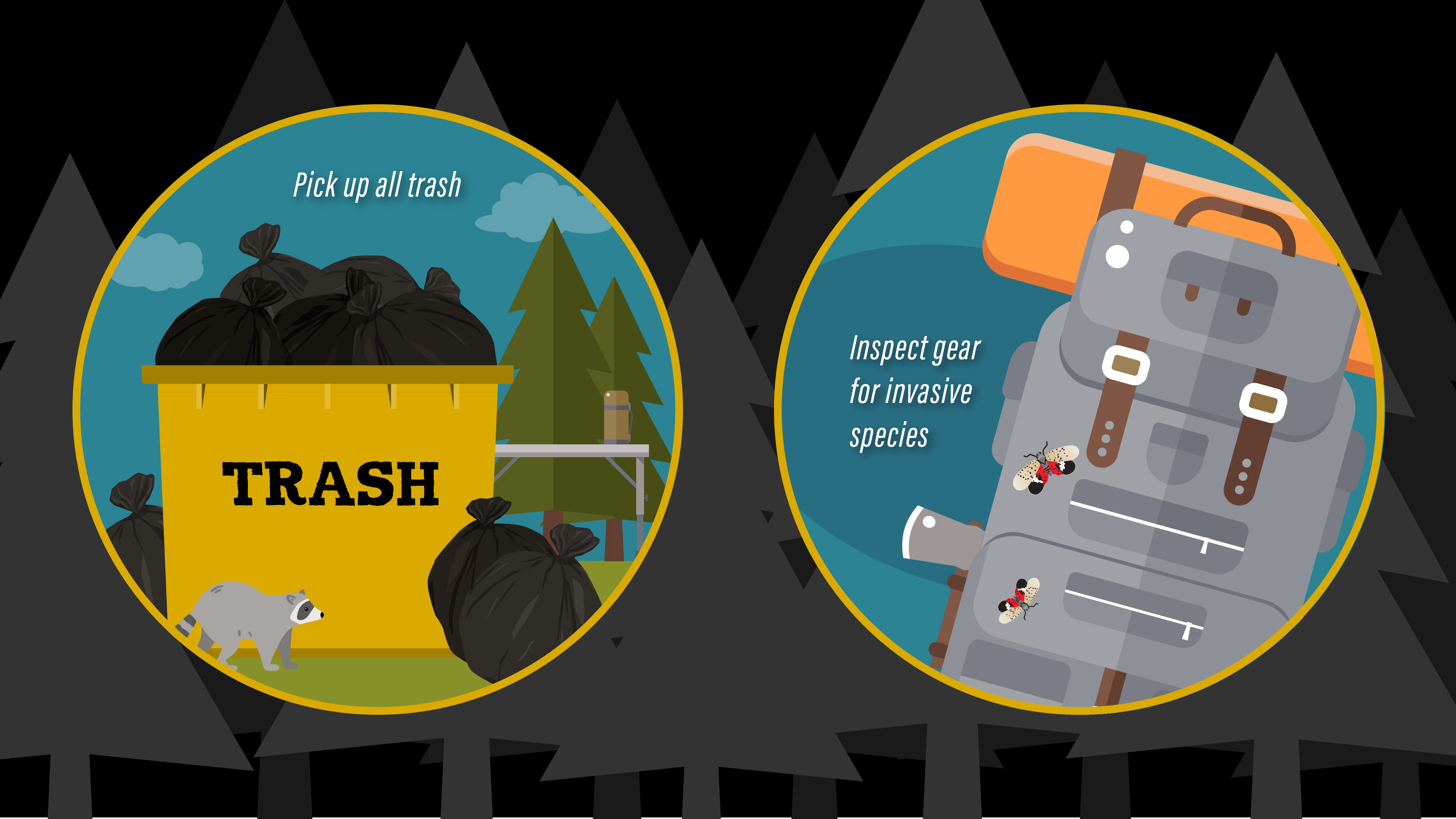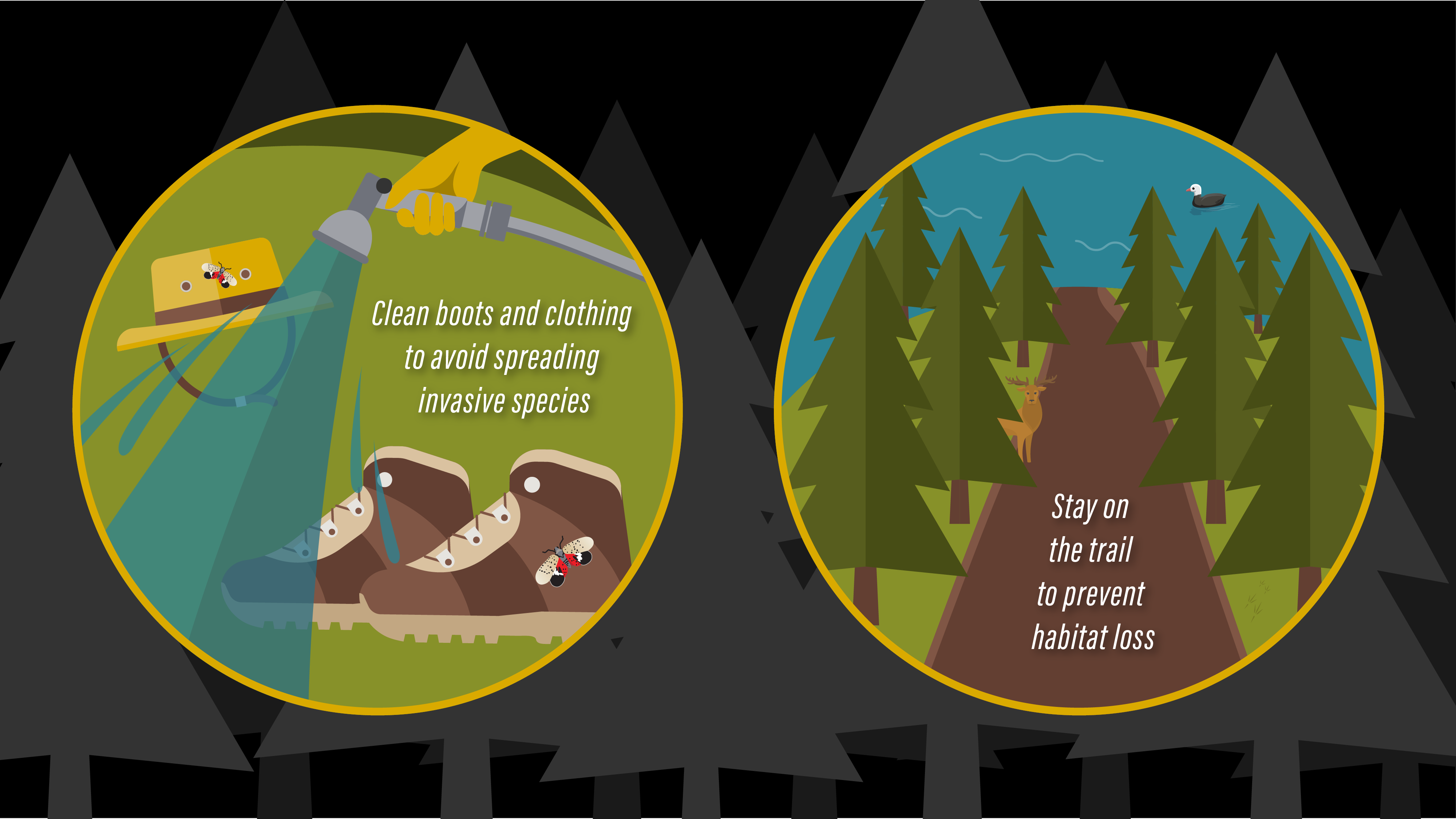Since COVID-19 sent everyone home to self-isolate inside, Purdue Extension Forester Lenny Farlee has witnessed a different kind of phenomenon.
“More people have started taking advantage of time outdoors, and that’s a good thing. But more people going outside can lead to additional pressure on the environment if people don’t act wisely and responsibly.”
As Indiana’s peak camping season picks up in June, Purdue Extension experts share tips on how campers, hikers and outdoor enthusiasts can help protect parks and wildlife for all to enjoy.

LEAVE NO TRACE
It’s step number one: setting up camp. Farlee advises campers to restrict tents and equipment to existing and hardened campsites to prevent erosion and soil compaction of surrounding vegetation.
“Thinking about existing guidelines as you establish camp is a big deal for conservation. I know some folks might feel constrained by this, but there are good reasons to practice this approach.”
While they may look cute, animals like raccoons can become accustomed to being fed and cause problems looking for food in people’s tents and campers. According to Extension Wildlife Specialist Brian MacGowan, unless there are bears in the area, storing food in a locked vehicle will effectively keep wildlife out. Trash should be thoroughly discarded in locked containers or off the campsite.
“One of the many joys of camping is seeing wildlife up close, but we have to remember to let wild animals be wild,” MacGowan said. “Even something like a cooler is not necessarily safe because a racoon can open that latch.”

When it’s time for tear-down, in addition to thoroughly picking up all trash, Horticultural Extension Entomologist Elizabeth Long suggests campers clean and inspect all vehicles, equipment and gear for signs of invasive species, such as spotted lanternfly egg masses on cars or grills or zebra mussels on boats.
“Familiarize yourself with what egg masses look like. If you’re suspicious, just scrape it off.”

BURN WHERE YOU BUY
Nothing says camping more than roasting smores around a campfire, but in some weather conditions, starting fires can be dangerous.
“Dry, windy, and low humidity conditions can pick up embers and start wildfires,” said Farlee. “Always check the fire conditions with the DNR or recreational area you’re staying at before you go.”
If conditions are safe for a fire, campers should use only the provided rings or pits and keep water or a shovel nearby to extinguish any stray embers. If there are no existing rings, cleaning an area down to bare soil or using stones will safely contain the fire.
“Think about where you’re placing any equipment that produces heat to avoid tree damage, protect surrounding vegetation, and prevent fires from starting,” said Farlee. “Make sure fine fuels are not close to fire—things like dry grass, leaves, or overhanging twigs.”
Equally as important as where you start your fire is the firewood itself.
“Don’t move firewood,” said Long. “Although you can’t see them, wood-boring beetles like the emerald ash borer can be inside wood, even wood that has been dead or sitting awhile.”
Instead, Long suggests buying firewood directly from the campsite or local gas station to prevent the spread of invasive species.

STAY ON THE TRAIL
Although it may be tempting to venture off the beaten path, Purdue Extension experts agree that it’s important to stay on well-established trails to avoid erosion issues and habitat loss. Going off-trail could disturb habitats with rare plants or animals or delicate conditions, creating problems for the entire ecosystem.
“One of the things we don’t think about is our capacity to spread invasive species through soil or residue on boots and clothing,” said Farlee. “One of the things I see along trails is a higher percentage of invasive species than in surrounding habitats, which is probably due to accidental human spread.”
To minimize the spread of invasive species, experts suggest making sure clothing is free of seeds, ticks, and burrs and cleaning shoes before and after a hike, especially in wet areas.
“If you’re going into any kind of wetland, there’s a possibility of disease transmission from site to site. We treat waders or boots as well as sampling equipment with a bleach solution to kill pathogens that impact amphibians and reptiles,” said MacGowan.
Not only does sticking to trails and sanitizing clothing help protect parks and habitats—it also protects the people who enjoy them.
“Although it makes me sound like a lame hiker, if you’re not hiking on a well-managed path, you’re more likely to pick up ticks,” said Long.
These tiny, bloodsucking parasites carry Lyme disease, and some tick bites can trigger Alpha-gal syndrome, a red meat allergy, posing a potential health risk. Hikers can wear long pants and sleeves to further protect themselves.
If there’s one more thing experts agree on, it's that wildlife is meant to be enjoyed by everyone.
“Take pictures!” said Farlee. “As tempting as it may be to take souvenirs like wildflowers, if everyone picked them, we wouldn’t have any. Take that low-impact approach and leave them in place for pollinators, and we’ll have even more next year.”





